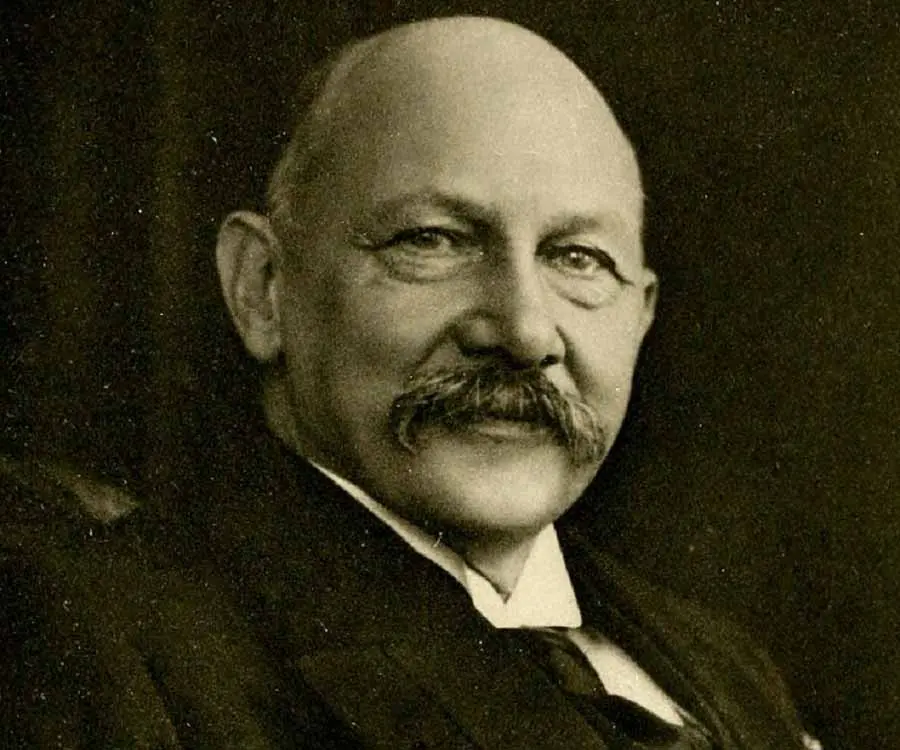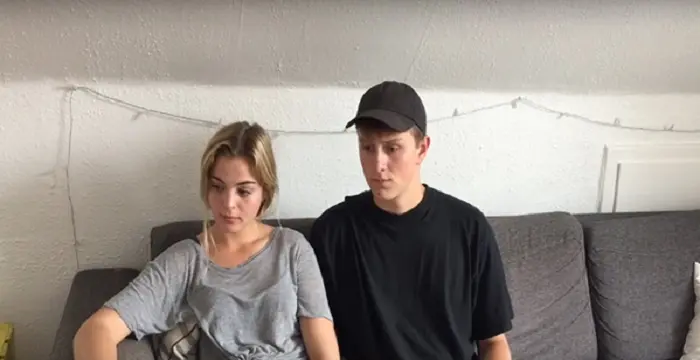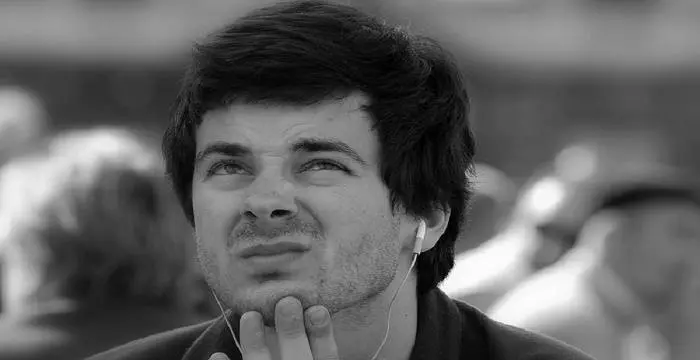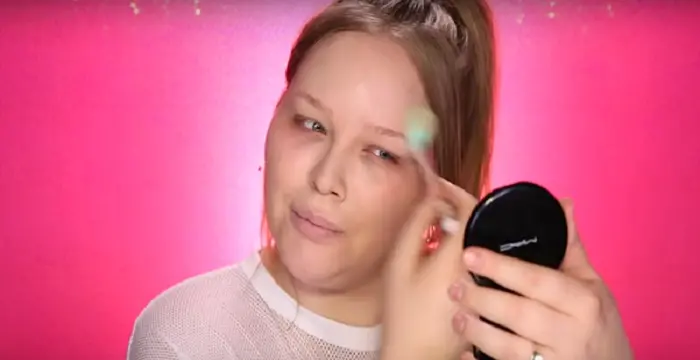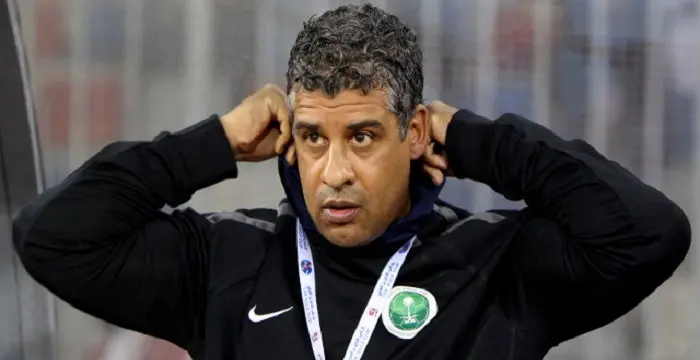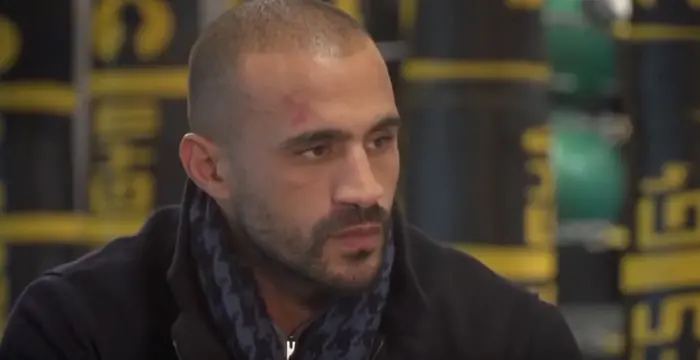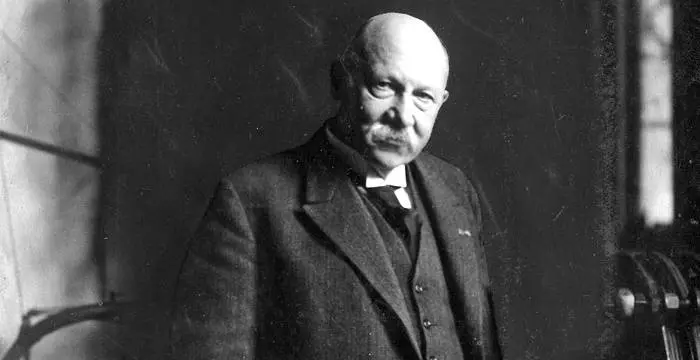
Heike Kamerlingh Onnes - Scientists, Career and Childhood
Heike Kamerlingh Onnes's Personal Details
Heike Kamerlingh Onnes was a Dutch physicist who won Nobel Prize in 1913
| Information | Detail |
|---|---|
| Birthday | September 21, 1853 |
| Died on | February 21, 1926 |
| Nationality | Dutch |
| Famous | Scientists, Physicists |
| Spouses | Maria Adriana Wilhelmina Elisabeth Bijleveld (m. 1887) |
| Siblings | Jenny, Menso Kamerlingh Onnes |
| Childrens | Albert Kamerlingh Onnes |
| Birth Place | Groningen, Netherlands |
| Gender | Male |
| Father | Harm Kamerlingh Onnes |
| Mother | Anna Gerdina Coers |
| Sun Sign | Virgo |
| Born in | Groningen, Netherlands |
| Famous as | Physicist |
| Died at Age | 72 |
// Famous Physicists
Henry Cavendish
Henry Cavendish was a theoretical chemist and physicist, renowned for discovery of hydrogen and calculation of the mass of earth. To know more about his childhood, profile, timeline and career read on
Walter Kohn
Nobel Laureate Walter Kohn was an Austrian-born American theoretical chemist and physicist. Check out this biography to know about his childhood, life, achievements, works & timeline.
Nikola Tesla
Nikola Tesla was a Serbian-American inventor, best known for his development of alternating current electrical systems. This biography of Nikola Tesla provides detailed information about his childhood, life, achievements, works & timeline.
Heike Kamerlingh Onnes's photo
Who is Heike Kamerlingh Onnes?
Heike Kamerlingh Onnes was a Dutch physicist who won Nobel Prize in 1913 for his investigations on the properties of matter at low temperatures. Born in Gronongen, he attended the University of Groningen and after receiving his ‘candidaats’ degree he started his doctoral work under Gustav Kirchhoff at at the University of Heidelberg; but within two years, returned to Groningen to finish it under R. A. Mees. His doctoral thesis on the rotation of the earth not only threw more light on the subject, but also established his grasp on mathematics. Subsequently, after working with Johannes Bosscha at the Polytechnicum in Delft for five years, he was appointed to the chair of Experimental Physics and Meteorology in the University of Leiden. There he decided to provide experimental support to van der Waals’s theory on the behavior of gases and established a cryogenic laboratory at the University. After years of concentrated work he was finally able to liquefy helium gas, which in turn helped him to discover superconductivity; a theory that states electric resistance of certain materials abruptly vanishes at very low temperatures. Because of his charming nature and fascination for low temperature work, he was lovingly called ‘Gentleman of Zero’.
// Famous Scientists
Juliane Koepcke
Juliane Koepcke is a German-Peruvian biologist, who was the lone survivor among the 92 passengers and crew of the ill-fated LANSA Flight 508 that crashed in the Peruvian rainforest on 24 December 1971. Know more about her life in this biography.
Henry Cavendish
Henry Cavendish was a theoretical chemist and physicist, renowned for discovery of hydrogen and calculation of the mass of earth. To know more about his childhood, profile, timeline and career read on
Konstantin Tsiolkovsky
Konstantin Tsiolkovsky was a Russian rocket scientist and a pioneer of astronautics. This biography provides detailed information about his childhood, family, personal life, career, achievements, etc.
Childhood & Early Life
Heike Kamerlingh Onnes was born on September 21, 1853, at Groningen, Netherlands. His father, Harm Kamerlingh Onnes, owned a bricklaying business near Groningen. His mother, Anna Gerdina Coers, was the daughter of an architect from Arnhem.
Heike Onnes had two siblings. His brother, Menso Kamerlingh Onnes, grew up to be a fairly well known painter while his sister, Jenny, married Floris Verster, another famous painter.
Onnes received his secondary education at Hoogere Burgerschool and passed out from there in 1870. Since the school did not teach classical languages, he took supplementary tuition in Greek and Latin.
Subsequently, he enrolled at the University of Groningen, receiving his ‘candidaats’ degree in 1871. Later in October, he enrolled at the University of Heidelberg, studying under Robert Bunsen and Gustav Kirchhoff.
Sometime now, he also started his doctoral thesis under Gustav Kirchhoff, but returned to the University of Groningen in April 1873. There he continued the same work under R. A. Mees.
In June 1878, he received a degree equivalent to M.S. On April 10, 1879, he defended his dissertation and became doctorate magna cum laude. His dissertation paper was titled ‘Nieuwe bewijzen voor de aswenteling der aarde’ (New proofs of the rotation of the earth).
Career
In 1878, a year before he received his doctoral degree, Heike Kamerlingh Onnes began his career as an assistant to Johannes Bosscha, the director of the Polytechnicum in Delft. Later from 1881 to 1882, he worked as a lecturer in place of Bosscha, concurrently, carrying out his own research work.
Also in 1881, he came in contact with van der Waals, Professor of Physics at Amsterdam, and one of the promoters of corpuscular theory. Onnes was highly influenced by him.
Subsequently, he published his first paper on the properties of matter at low temperatures. Titled, ‘Algemeene theorie der vloeistoffen’ (General theory of liquids), it dealt with the kinetic theory of the liquid state.
In April 1882, Onnes was appointed as the Professor of Experimental Physics and Meteorology in the University of Leiden. In his inaugural address, ‘De beteekenis van het quantitatief onderzoek in de natnurkunde’ (The importance of quantitative research in physics), he clearly spelled the motto of his life ‘Door meten tot weten’ (Knowledge through measurement).
On being appointed as a Professor of Experimental Physics, Onnes decided to provide experimental support to van der Waals’s theory on the behavior of gases. However, to prove that experimentally, Onnes had to build an apparatus that would be able to liquefy air in large quantity.
In 1894, Onnes was finally successful in establishing a cryogenic laboratory at the University of Leiden. From 1895 to 1906, he concentrated on perfecting cryogenic experimental techniques and studied metals and fluids at low temperatures. At this point, his researches followed two distinct lines.
On the one hand, he followed the theories of van der Waals concerning equation of state, viscosity, capillarity etc and on the other hand, he also kept in mind the theoretical work of Hendrik Lorentz concerning the magneto-rotation of the plane of polarization, Kerr Effect, Hall Effect etc.
In 1901, he established a glass-blowing school at the laboratory, which earned it international recognition.
In 1906, he was able to build an improved hydrogen-liquefaction machine. Sometime now, he also coined the term ‘Enthalpy’, which is a measurement of energy in a thermodynamic system.
On 10 July 1908, Onnes was finally able to liquefy a small quantity of helium. Using the Joule-Thomson effect, he was able to bring down the temperature of the gas down to 0. 9° K. It was the lowest temperature to be reached at that time. The success led to further research in this field.
However, Onnes now gave up his quest for reaching lower and lower temperature. Instead, he now began studying the properties of liquid helium. Therefore, he spent the next three years developing apparatus that would be able to store the liquid helium and study them further.
Sometime now, he also tried to solidify helium. Although he failed in this mission, his student and successor at the laboratory, Willem Hendrik Keesom, accomplished it in 1926.
Nonetheless, his work on helium set the stage for his next major discovery. By now, it had already been established that resistance dropped as a metal was cooled. However, scientists were not sure what would happen if the temperature neared absolute zero. Onnes now set out to solve the riddle.
In spring of 1911, he began his studies on electrical conductivity of metals in low temperature. Working with mercury, he established that in some substances, electrical resistance begins to diminish at very low temperatures and vanishes after certain stage.
In 1913, he named the phenomenon as ‘Supraconductivity’. Later he changed the term to ‘Superconductivity. Onnes carried on systematic researches on superconductivity, which had far reaching effect on the theory of electrical conduction in solids.
At the same time, he continued guiding number of doctoral students, many of whom later became established scientists. He retired in 1923.
Apart from his laboratory research works, Onnes was also involved in the application of low temperature in day to day matters such as refrigerator, food preservation and production of ice. Because of his enthusiasm about low temperature, he was lovingly called ‘Gentleman of Zero’.
Major Works
He is known for his investigations regarding how materials behave when cooled to nearly absolute zero. He liquefied helium for the first time and his production of extreme cryogenic temperatures led to his discovery of superconductivity..
Awards & Achievements
In 1913, Heike Kamerlingh Onnes was awarded the Nobel Prize in Physics "for his investigations on the properties of matter at low temperatures which led, inter alia, to the production of liquid helium".
Personal Life & Legacy
In 1887, Onnes married Maria Adriana Wilhelmina Elisabeth Bijleveld. The couple had a son Albert Kamerlingh Onnes, who later became a very high ranking civil servant at The Hague. Their home was well known for the hospitality it offered.
Onnes was a great scientist, but not a workaholic. He had a very loving nature and aided by his wife, he took part in many humanitarian activities, such as ironing out political differences between scientists during the First World War and helping starving children in poorer countries with food shortage.
He suffered from poor health and died at Leyden on February 21, 1926 after a short illness.
Trivia
The low-temperature laboratory he established in 1894 is now called Kamerlingh Onnes Laboratory.
Many of the instruments devised by Onnes for conducting the experiments are now on display at the Boerhaave Museum in Leiden. The apparatus he first used to liquefy helium is also kept in the lobby of the Physics Department at Leiden University.
‘The Onnes Effect‘, which refers to the creeping of superfluid helium, has been named in his honor.
He also has a crater named after him on the far side of the moon.
// Famous Virgo Celebrities peoples
Temple Grandin
Temple Grandin is a well-known American writer, autistic activist and animal expert. This biography profiles her childhood, life, achievements, career and timeline
Alex Holtti
Check out all that you wanted to know about Alex Holtti, the famous Danish Viner & YouTuber; his birthday, his family and personal life, his girlfriends, fun trivia facts and more.
Benjamin Atkinson
Benjamin Atkinson is the son of the world-renowned British actor and comedian, Rowan Atkinson. Check out this biography to know about his childhood, family, personal life, including his age, birthday, etc.
Heike Kamerlingh Onnes's awards
| Year | Name | Award |
|---|---|---|
Other | ||
| 0 | Matteucci Medal - 1910 | |
| 0 | Rumford Medal - 1912 | |
| 0 | Nobel Prize in Physics -1913 | |
| 0 | Franklin Medal - 1915 | |
Heike Kamerlingh Onnes biography timelines
- // 21st Sep 1853Heike Kamerlingh Onnes was born on September 21, 1853, at Groningen, Netherlands. His father, Harm Kamerlingh Onnes, owned a bricklaying business near Groningen. His mother, Anna Gerdina Coers, was the daughter of an architect from Arnhem.
- // 1870Onnes received his secondary education at Hoogere Burgerschool and passed out from there in 1870. Since the school did not teach classical languages, he took supplementary tuition in Greek and Latin.
- // 1871Subsequently, he enrolled at the University of Groningen, receiving his ‘candidaats’ degree in 1871. Later in October, he enrolled at the University of Heidelberg, studying under Robert Bunsen and Gustav Kirchhoff.
- // 1873Sometime now, he also started his doctoral thesis under Gustav Kirchhoff, but returned to the University of Groningen in April 1873. There he continued the same work under R. A. Mees.
- // 1878 To 1882In 1878, a year before he received his doctoral degree, Heike Kamerlingh Onnes began his career as an assistant to Johannes Bosscha, the director of the Polytechnicum in Delft. Later from 1881 to 1882, he worked as a lecturer in place of Bosscha, concurrently, carrying out his own research work.
- // 1878In June 1878, he received a degree equivalent to M.S. On April 10, 1879, he defended his dissertation and became doctorate magna cum laude. His dissertation paper was titled ‘Nieuwe bewijzen voor de aswenteling der aarde’ (New proofs of the rotation of the earth).
- // 1881Also in 1881, he came in contact with van der Waals, Professor of Physics at Amsterdam, and one of the promoters of corpuscular theory. Onnes was highly influenced by him.
- // Apr 1882In April 1882, Onnes was appointed as the Professor of Experimental Physics and Meteorology in the University of Leiden. In his inaugural address, ‘De beteekenis van het quantitatief onderzoek in de natnurkunde’ (The importance of quantitative research in physics), he clearly spelled the motto of his life ‘Door meten tot weten’ (Knowledge through measurement).
- // 1887In 1887, Onnes married Maria Adriana Wilhelmina Elisabeth Bijleveld. The couple had a son Albert Kamerlingh Onnes, who later became a very high ranking civil servant at The Hague. Their home was well known for the hospitality it offered.
- // 1894 To 1896In 1894, Onnes was finally successful in establishing a cryogenic laboratory at the University of Leiden. From 1895 to 1906, he concentrated on perfecting cryogenic experimental techniques and studied metals and fluids at low temperatures. At this point, his researches followed two distinct lines.
- // 1894The low-temperature laboratory he established in 1894 is now called Kamerlingh Onnes Laboratory.
- // 1901In 1901, he established a glass-blowing school at the laboratory, which earned it international recognition.
- // 1906In 1906, he was able to build an improved hydrogen-liquefaction machine. Sometime now, he also coined the term ‘Enthalpy’, which is a measurement of energy in a thermodynamic system.
- // 10th Jul 1908On 10 July 1908, Onnes was finally able to liquefy a small quantity of helium. Using the Joule-Thomson effect, he was able to bring down the temperature of the gas down to 0. 9° K. It was the lowest temperature to be reached at that time. The success led to further research in this field.
- // 1911In spring of 1911, he began his studies on electrical conductivity of metals in low temperature. Working with mercury, he established that in some substances, electrical resistance begins to diminish at very low temperatures and vanishes after certain stage.
- // 1913In 1913, he named the phenomenon as ‘Supraconductivity’. Later he changed the term to ‘Superconductivity. Onnes carried on systematic researches on superconductivity, which had far reaching effect on the theory of electrical conduction in solids.
- // 1913In 1913, Heike Kamerlingh Onnes was awarded the Nobel Prize in Physics "for his investigations on the properties of matter at low temperatures which led, inter alia, to the production of liquid helium".
- // 1923At the same time, he continued guiding number of doctoral students, many of whom later became established scientists. He retired in 1923.
- // 1926Sometime now, he also tried to solidify helium. Although he failed in this mission, his student and successor at the laboratory, Willem Hendrik Keesom, accomplished it in 1926.
- // 21st Feb 1926He suffered from poor health and died at Leyden on February 21, 1926 after a short illness.
// Famous Dutch peoples
Nikkie De Jager
Check out all that you wanted to know about Nikkie De Jager, the famous Dutch Makeup artist; her birthday, her family and personal life, her boyfriends, fun trivia facts and more.
Romee Strijd
Romee Strijd is a Dutch model, also known as a 'Victoria's Secret Angel.' Check out this biography to know about her family, personal life, including her age, birthday, etc.
Nisrina Sbia
Nisrina Sbia is a social media influencer and model who rose to fame and has made it big on Instagram. Check out this biography to know about her birthday, childhood, family life, achievements and fun facts about her.
Jelle Van Vucht
Jelle Van Vucht is a Dutch YouTube star and gamer. Let’s have a look at his age, family life, birthday, net worth, girlfriends, and some fun facts.
Frank Rijkaard
Frank Rijkaard is a retired Dutch footballer often regarded as one of the greatest defensive midfielders. This biography profiles his childhood, life, football career, achievements and timeline.
Badr Hari
Badr Hari is a Moroccan-Dutch super heavyweight kickboxer. Check out this biography to know about his childhood, family life, achievements and fun facts about his life.
Heike Kamerlingh Onnes's FAQ
What is Heike Kamerlingh Onnes birthday?
Heike Kamerlingh Onnes was born at 1853-09-21
When was Heike Kamerlingh Onnes died?
Heike Kamerlingh Onnes was died at 1926-02-21
Where was Heike Kamerlingh Onnes died?
Heike Kamerlingh Onnes was died in Leiden, Netherlands
Which age was Heike Kamerlingh Onnes died?
Heike Kamerlingh Onnes was died at age 72
Where is Heike Kamerlingh Onnes's birth place?
Heike Kamerlingh Onnes was born in Groningen, Netherlands
What is Heike Kamerlingh Onnes nationalities?
Heike Kamerlingh Onnes's nationalities is Dutch
Who is Heike Kamerlingh Onnes spouses?
Heike Kamerlingh Onnes's spouses is Maria Adriana Wilhelmina Elisabeth Bijleveld (m. 1887)
Who is Heike Kamerlingh Onnes siblings?
Heike Kamerlingh Onnes's siblings is Jenny, Menso Kamerlingh Onnes
Who is Heike Kamerlingh Onnes childrens?
Heike Kamerlingh Onnes's childrens is Albert Kamerlingh Onnes
Who is Heike Kamerlingh Onnes's father?
Heike Kamerlingh Onnes's father is Harm Kamerlingh Onnes
Who is Heike Kamerlingh Onnes's mother?
Heike Kamerlingh Onnes's mother is Anna Gerdina Coers
What is Heike Kamerlingh Onnes's sun sign?
Heike Kamerlingh Onnes is Virgo
How famous is Heike Kamerlingh Onnes?
Heike Kamerlingh Onnes is famouse as Physicist



